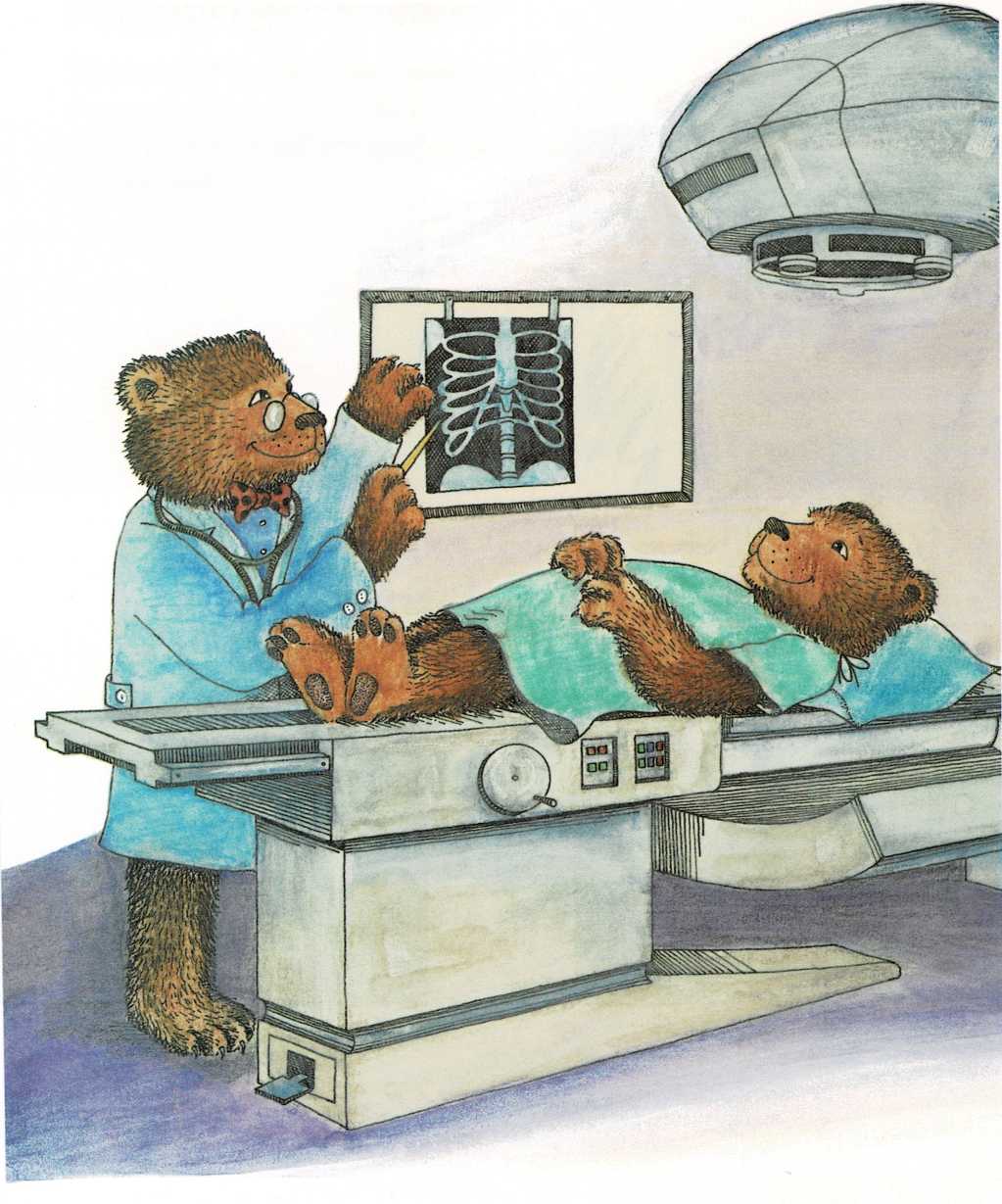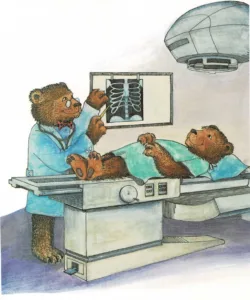
Putting light to work
What’s on TV tonight? Why, nothing but thousands of lines full of
millions of spots of light. That’s what makes up the program you are
watching!
Part of a TV camera makes an electric copy of the scene. It changes
bright and dark spots to strong and weak spots of electricity.
Then another part of the TV camera \”reads” the spots. It zips across
the scene in lines. But it \”reads” much faster than people do. It turns
a scene into more than five hundred lines—and it does this thirty
times in a second!
As each line is read, strong and weak electric signals are sent from the
TV station to your set. The signals make a part inside the TV set shoot
electrons at the screen. The electrons zip across in lines, changing the
strong and weak signals back into bright and dark spots. And there is
your TV picture, in millions of spots of light.
You can smile for a TV camera, but don’t bother smiling for an X-ray
machine. It only takes pictures of what’s inside you. It does this by
shooting X rays through your body!
X rays are somewhat like ordinary light. But they pass right through
your skin and all the soft parts of your body. Only hard or thick parts
stop them.
So when an X-ray picture is taken, the X rays pass through most of you
and hit the film. But the parts that stop the X rays cause a shadow.
When the film is developed, it shows shadows of bones, teeth, or thick
parts such as your heart.

